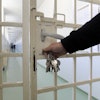Dear Imaging Insider,
Lasers in dentistry are most often seen as high-priced surgical tools that some dentists swear by and others swear at. But lasers are increasingly finding their way into next-generation dental imaging devices, bringing a new level of resolution and sophistication to early caries detection and other diagnostic applications.
Take optical coherence tomography (OCT), for example. With resolution 10 times better than x-rays, the promise of OCT in dentistry is that it will allow for early detection of dental caries, microstructural defects, and periodontal disease. However, while OCT can probe more deeply into tissue than x-rays, it cannot provide the biochemical information that would further enhance diagnostic specificity.
So some researchers are combining OCT with another optical imaging technique -- spectroscopy -- to overcome the sensitivity and specificity limitations of existing caries-detection products such as Diagnodent, D-Carie, and DIFOTI. Read more in this Imaging Insider Exclusive.
Another optical caries-detection system designed to improve upon existing technology is the Canary. Introduced by Quantum Dental Technologies at the International Association for Dental Research meeting this summer, the Canary combines lasers and thermal imaging to bring the best of both to early caries detection. Find out more here.
Another cutting-edge imaging technology that has the dental community talking is cone-beam CT (CBCT). Contributing editor Greg Holden recently looked at two studies that indicate that CBCT is superior to conventional periapical x-rays for certain types of preoperative visualization. Find out which procedures, and why, here. And don't miss his follow-up, "How to get reimbursed for cone-beam CT," which offers tips and tricks for maneuvering the sometimes tricky CBCT reimbursement landscape.
But of course conventional x-rays continue to dominate the dental imaging landscape. Even after all these years, however, questions remain as to how safe they are for patients. A new study published in the Journal of the American Dental Association raises concerns that dental x-rays cause a lot more cancer than previously assumed, and that most dentists aren't doing enough to protect their patients from the risk. Read more.
Imaging also plays a key role in forensic dentistry. Assistant editor Rabia Mughal talked with one New Jersey dentist about his involvement with DMORT, a federal-level response team that provides mortuary assistance after incidents such as 9/11 or Hurricane Katrina. At these and other mass-fatality events in recent years, he used his forensic skills to help identify victims using dental information. Read his comments about this often challenging, but also rewarding, task here.















